David Stairs
Special thanks to ajantriks for help with this article.
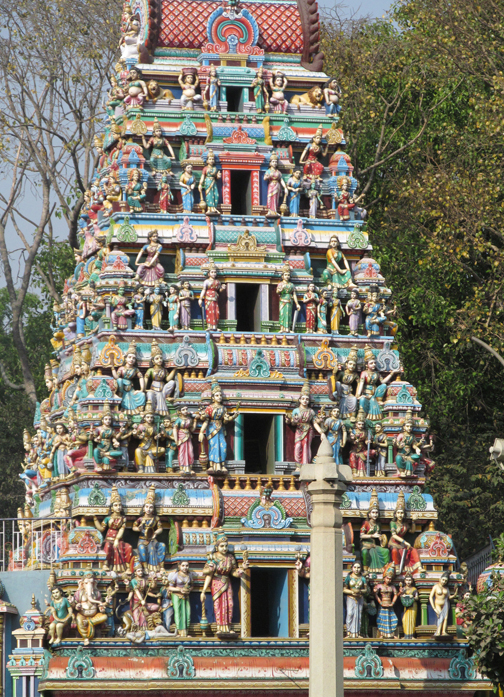
Hindu temple, Chowdaiah Road, Bangalore
On the weekend The Avengers opened in Bangalore, one week prior to its release in America, theaters were jammed with middle class Indians flocking to view the latest exploits of some of their favorite heroes. Whatever you may think about the Marvel franchise, now a part of the Disney empire, you’ve got to admit it really delivers action. But why would Indians be so interested in the exploits of heroes, gods, and monsters?
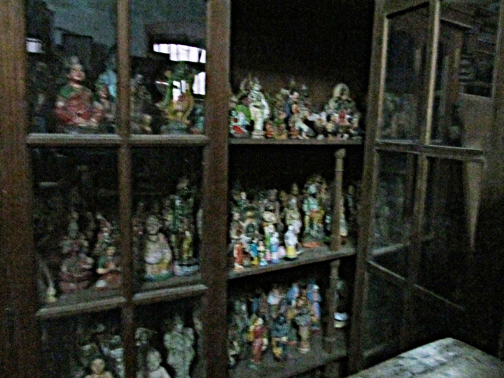
Hindu, Buddhist, and Christian devotional figurines, antiquities shop, Pondicherry
While living in Bangalore, I often had occasion to observe that Indians are as addicted to violence as Americans. At a screening of Agent Vinod, India’s version of James Bond, the audience was loaded with kids, in spite of the fact that the hero was whacking people twenty-at-a-time in scene-after-scene. How could this be, you may wonder, given India’s history of asceticism, spiritual reflection and the search for truth? But India, crossroads of most historical civilizations and absorber of countless invasions, has quite a violent history.
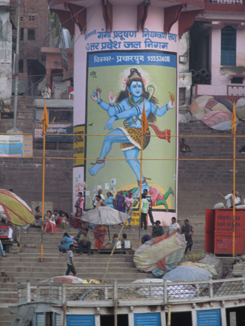
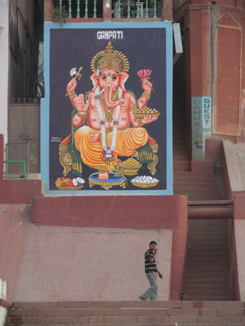
Shiva and his son Ganesh, Benares
The Mahabharata, India’s great poetic/historic text, describes the war for unification of India, an empire that, at the time, extended to include much of “Gandhara” or modern day Afghanistan. The Mahabharata includes not only the Krishna legends, but also the Bhagavad Gita. It invokes the principle of dharma which, although specific to the moment, states that duty and responsibility to the community trumps all. Our adage “Do unto others as you would have them do unto you” is the central teaching of the Mahabharata.
Unfortunately, humans being as they are, sometimes non-violence does not work, in which case people often resort to aggression, murder, and war. And Indians are well versed in the art of war. The other great classical epic, the Ramayana, tells a tale of bride theft and reprisal so similar to the Trojan War one imagines Homer must have borrowed his idea for the Iliad from India. Jawaharal Nehru, in describing these texts says, “Probably this was the period when foreign elements were coming into India and bringing their customs with them… Gradually the absorption of the earlier indigenous elements as well as of newcomers was taking place, and the Vedic religion was being modified accordingly. It was beginning to take that all-inclusive form which led to modern Hinduism.”1

Rama shooting Ravana with a special arrow
Is Hinduism monotheistic, or polytheistic? Common belief holds that there is one God, variously named Brahman, Krishna, or Aum, but that this deity has many faces or forms, represented by devas. The total number of devas varies by an order of magnitude, depending upon who you ask, but can reach into nine figures. As seems to be similar in Greek, Norse, and even Christian mythology, these emissaries, or celestial beings, should not be confused with the One, or main God but, rather, help to explain God’s presence in nature. Hindus have Lakshmi, deva of wealth, while Christians have St. Jude, patron saint of lost causes. The human need to anthropomorphize events, powers, and natural phenomena does not recognize any borders.


Hanuman, holographic and 3D
The sheer volume and originality of Indian super beings is amazing. There is Hanuman the clever monkey, who plays a central role in the Ramayana, a trickster like Coyote of Native American fame. Ganesh, the elephant, is ritualistically invoked at the outset of any new undertaking as he is reputed to be good at removing obstacles. Krishna, the blue skinned boy god, is an avatar of Vishnu, the preserving force, while Shiva, the destroyer famously referenced in Robert Oppenheimer’s quotation from the Bhagavad Gita at the Trinity Test in 1945, is Ganesh’s father, and often portrayed with four arms either dancing or shooting his bow. Agni, god of fire, could easily out-pyro the Human Torch, while Kali, goddess of destruction and change, could arm wrestle Hulk.
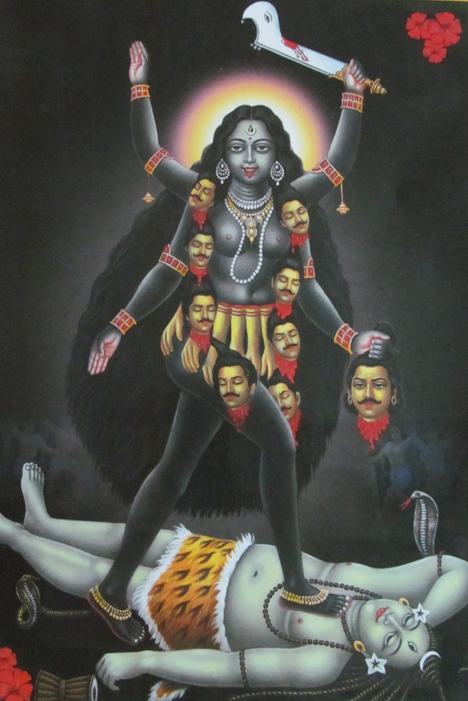
Dakshina Kali, Shiva’s consort, pictured standing on his body
Of course, Indian illustrators have been converting Indian myth into comic book form for decades. The Ramanaya is a particularly rich resource. The classic treatment is from the publishing house Amar Chitra Katha in the ’70s. Current champion is provided by Liquid Comics.
Given the antiquity of the Indian pantheon, one wonders why modern Indians would be at all interested in western superheroes. After all, the Mahabharata predates Siegel and Shuster’s invention of Superman by at least 3300 years. Then again, maybe the answer is obvious. In a world of infinite detail, human imagination is capable of almost ceaseless invention. And in a universe of 330,000,000 devas, the late arrival of a few more overachievers won’t cause much alarm.

Notes
1)The Discovery of India. Jawaharlal Nehru. London: Penguin Books 2004 p. 106
David Stairs is the founding editor of Design-Altruism-Project











Leave a Reply
You must be logged in to post a comment.